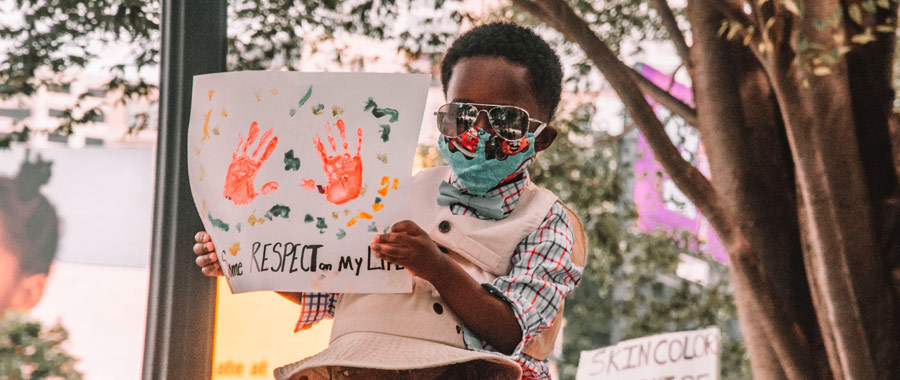The pursuit of racial healing necessitates an honest confrontation with discomfort, a rather unpalatable truth rarely acknowledged in societal discourse. Discomfort, while typically perceived as negative, emerges as an indispensable catalyst for profound transformation. This article delves into the assertion that discomfort can be navigated towards racial healing, advocating for a paradigm shift in perspective that invites curiosity and engagement with an oft-avoided subject.
The first consideration lying at the heart of this discussion is the essential role that discomfort plays within the context of personal and collective growth. Discomfort serves as an authentic indicator that we are stepping outside our comfort zones. It compels us to confront long-standing assumptions and biases, thereby catalyzing a conscious re-evaluation of entrenched beliefs. This process invites an unsettling, yet necessary, confrontation with systemic inequities and injustices that have persisted throughout history.
Moreover, discomfort is an intrinsic aspect of the human experience. Just as physical discomfort can signal the presence of injury or illness, emotional discomfort can reveal the significant societal ailments that require urgent attention. Recognizing this correlation encourages individuals not to shy away from their unease but to embrace it as a precursor to meaningful change. Indeed, when the discomfort arises, it is imperative to interrogate its sources to unearth hidden truths about oneself and one’s community.
The next pivotal aspect of this exploration is the examination of the psychological mechanisms at play during encounters with discomfort. Cognitive dissonance—the mental discomfort that arises from holding two contradictory beliefs—is a prevalent phenomenon that often surfaces in discussions about race. When individuals confront their biases or prejudices, they experience a clash between their ideals and their actions, prompting a desire to reconcile these contradictions. This inner turmoil can serve as a motivational force, pushing individuals towards introspection, education, and ultimately, transformation.
Furthermore, the cultivation of empathy is significantly influenced by embracing discomfort. When individuals engage with narratives and histories that are not their own, they often find themselves faced with feelings of discomfort. This emotional response, far from being a deterrent, offers an opportunity to forge connections with others’ experiences. Empathy thrives in spaces where dissonance is acknowledged and explored, laying the groundwork for authentic relationships that transcend racial divides. Through this lens, discomfort becomes not just a feeling to be avoided but a bridge towards understanding.
Critically, the dialogue surrounding racial healing must include the understanding that discomfort is not inherently negative. To view discomfort solely as a negative experience is to overlook the potential for growth and interconnection that it facilitates. Acknowledging the duality of discomfort as both challenging and illuminating fosters resilience. This resilience is paramount for individuals engaged in the arduous journey of rectifying long-standing racial injustices. Embracing discomfort enables individuals to cultivate patience and perseverance, fortifying their commitment to engage persistently in conversations about race.
In light of this understanding, it becomes essential to consider the role of safe spaces in navigating discomfort. These environments, whether facilitated by community organizations, educational institutions, or informal gatherings, provide supportive frameworks within which individuals can express their discomfort and engage in critical dialogues. Safe spaces allow participants to confront their feelings without fear of reprisal, fostering an atmosphere where vulnerability can lead to authentic discussions surrounding race. Here, discomfort can be transformed into a tool for collective learning rather than a deterrent that silences discourse.
Moreover, institutions and organizations can play a crucial role in normalizing discussions about discomfort and racial healing. Actively incorporating training programs that emphasize the importance of discomfort in the pursuit of racial equity can redefine organizational cultures. This shift creates environments that not only accept but also cultivate discomfort as a vital aspect of learning and growth. By fostering spaces where discomfort can be shared and explored, institutions help dismantle barriers, encouraging a community-wide dialogue about race that is rooted in mutual understanding and respect.
Equally important is the notion of active listening as a mechanism for embracing discomfort. Listening requires us to temporarily set aside our definitions of reality to engage with others’ perspectives. This active, empathetic engagement fosters an environment where discomfort can flourish and lead to deeper comprehension of racial disparities. By genuinely listening to experiences and stories that challenge our own, we can combat the impulse to retreat from discomfort and instead confront it head-on, thereby incorporating new perspectives into our worldview.
Ultimately, the journey towards racial healing is profoundly collective. By recognizing discomfort as an ally rather than an adversary, individuals can collectively navigate the complexities of racial dynamics with greater courage. The acceptance of discomfort signifies a commitment to transformative processes that do not shy away from examining the uncomfortable realities that support racial injustice.
In summary, the dynamics of racial healing are intricate but essential. Discomfort is a poignant sign of progress, encouraging individuals and communities to delve deeper into the murky waters of race relations. This exploration catalyzes a shift in perspective that not only favors curiosity but also empowers individuals to initiate conversations that have the potential to lead to profound societal change. Discomfort, then, is not merely a transient feeling to be navigated but is an invitation to engage in the discomforting yet essential work required for genuine racial healing.
